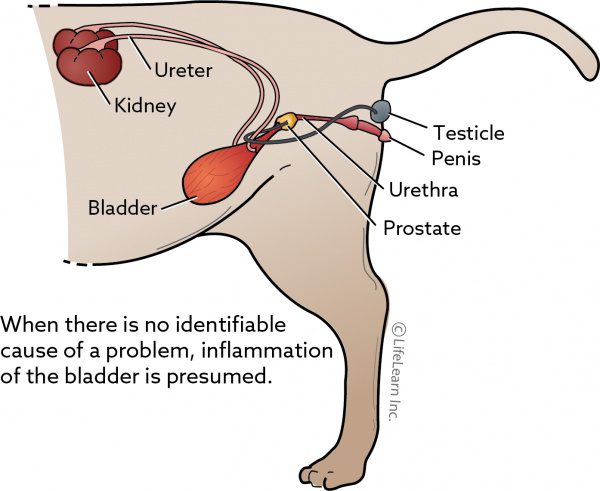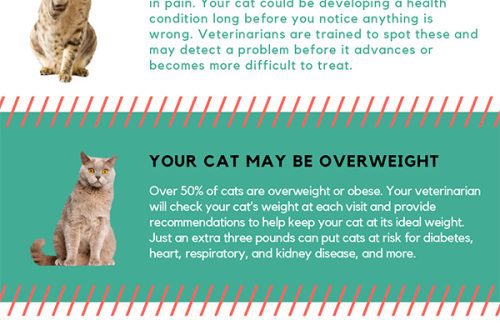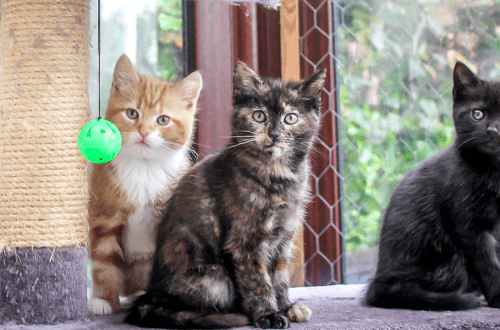
Idiopathic cystitis of cats
Idiopathic cystitis is inflammation of the bladder for unknown reasons. Yes, it happens in cats and so, there is cystitis, but it is not possible to find out the cause. Idiopathic cystitis occurs in about 60% of cats with bladder disease. At the same time, the presence of all clinical signs of cystitis is noted, but the urine is sterile.
Contents
Suggested Causes of Idiopathic Cystitis
Possible causes and predisposing factors for the development of idiomatic cystitis include:
- Stress. Considered the main reason. (Fear of strangers, children, strained relationships with other pets, the appearance of a new pet in the house).
- neurogenic inflammation.
- Metabolic disease.
- Low-activity lifestyle.
- Obesity.
- Low fluid intake.
- Diet disorders.
- Bladder adhesions.
- Violation of innervation in neurological disorders.
- Congenital anomalies and acquired defects of the bladder, ureters and urethra.
- Other diseases of the urinary system, for example, bacterial infections, urolithiasis.
Symptoms
- Pollakiuria (too frequent urination)
- Dysuria and anuria (difficulty urinating or no urination)
- Prolonged stay on the tray.
- Periuria (necessities in the wrong places)
- Anxiety.
- Increased vocalization, more often in the tray.
- Stiff posture with a hunched back when trying to urinate.
- Hematuria (blood in the urine).
- Soreness when touching the abdomen, aggression when touched.
- Licking of the lower abdomen and genitals, up to loss of hair and the appearance of wounds.
- Lethargy, refusal to feed or loss of appetite, vomiting if acute urinary retention has developed.
Signs of idiopathic cystitis may be similar to other types of cystitis, urolithiasis, and some other diseases.
Diagnosis of the disease
At the first signs of the disease, you should contact the veterinary clinic. After examining and collecting information, the doctor will recommend a number of studies:
- General urine analysis. Includes microscopic examination of sediment and chemical properties of urine.
- The protein/creatinine ratio in urine is essential for the early diagnosis of renal failure. The analysis may be unreliable if there is a large amount of blood in the urine.
- An ultrasound examination of the urinary system is performed on a filled bladder. If the cat constantly empties it, then symptomatic therapy is first carried out to relieve spasm.
- To exclude radiopaque calculi (stones), a picture is taken.
- A bacteriological urine culture may also be required to exclude an infectious agent.
- In severe cases, invasive diagnostics such as cystoscopy or bladder cystotomy may be required, for example, if cancer is suspected.
- Blood tests are important if acute urinary retention has occurred or if the doctor thinks the kidneys may be damaged.
Treatment
Idiopathic cystitis usually occurs without infection, so antibiotic therapy is not required.
- An important point in therapy is to relieve spasm of the bladder, reduce stress, increase the amount of moisture consumed by the cat.
- As part of complex therapy, drugs are used: KotErvin, Cyston, Stop-cystitis in suspension and tablets.
- To minimize stress, drugs of various forms are used: collars, sprays, diffusers, drops. More often they use Feliway, Sentry, Relaxivet, Stop Stress, Fitex, Vetspokoin, Kot Bayun.
- There are also specialized urological diets for cats, such as Hill’s Prescription Diet c/d Multicare Urinary Stress wet cat food for urolithiasis and idiopathic cystitis, Hill’s Prescription Diet Metabolic + Urinary Stress cat food for the treatment and prevention of stress-induced cystitis.
Prevention of idiopathic cystitis
- The cat should have its own corner-house, bed, toys, a place for games and a good rest.
- The number of trays in the house should equal the number of cats +1. That is, if 2 cats live at home, then there should be 3 trays.
- Water should be kept separate from food and even more so from the toilet. Water can be poured into different containers. Many cats like to drink from tall glasses or drinking fountains.
- If your cat is not getting enough moisture, you can mix wet food with dry food, or switch to wet food.
- In case of risk of stress: repair, relocation, guests are advised to start using sedatives in advance or think about how to reduce stress. You can allocate a separate room for the time the guests are in the apartment, or even a closet drawer where no one will touch it. You can pre-administer sedatives.
- If your cat is prone to FCI, get checkups at least once a year.





